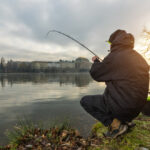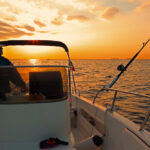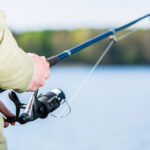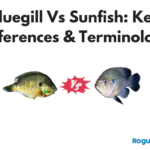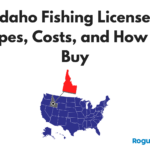Fishing is one our favorite activities, but it isn’t the cheapest sport out there. If you’re an avid fisherman, you probably have a good amount of equipment. We can easily spend thousands of dollars on our fishing gear, and we should protect it. Finding the best fishing tackle insurance of 2023 is an excellent way to protect your investment and give you some peace of mind.
Our Top 3 Best Fishing Tackle Insurance Providers
Here are three solid options for fishing tackle insurance. Please keep in mind, it’s important to check with your current providers as well. Your home insurance may already offer some type of coverage, or an add on. Also, if you don’t own a boat but you have a heft amount of gear, going with a rider to your home insurance policy may make more sense.
1. BoatUS / Geico
BoatUS has teamed up with Geico to provide some quality boat/fishing tackle coverage.
Here’s some more details:
- Up to $5,000 per incident for fishing equipment and gear lost, damaged or stolen.
- Automatic Tournament Coverage. Our coverage follows you to all the competitions you enter in North America, including Canadian and Mexican waters. (Note: Mexican Liability Coverage – required when boating in Mexico.)
- PLUS entry fee reimbursement should a claim cause you to have to withdraw from a tournament.
2. Progressive
Progressive offers some solid boat insurance that you can add your fishing gear to. Coverage starts as low as $100/year! They also offer home and auto which may offer a good opportunity to bundle everything together.
3. American Family Insurance
AMF is another good provider who offers fishing tackle coverage on their boat policies.
How to Select the Best Fishing Tackle Insurance
Luckily, there are several options when it comes to insuring your fishing gear. We’ll discuss all the options throughout the rest of this article.
1. Insuring Your Fishing Tackle through Boat Insurance
Many boat insurance policies can include fishing gear. Some offer personal possessions coverage with every policy. Fishing gear will often fall within this coverage. Policies will likely cover:
- Rods & Reels
- Tackle
- Trolling motors
Keep in mind, not all policies automatically cover your personal possessions or fishing gear. You might have to add a policy rider to your existing boat coverage to qualify for this protection. Also, this type of coverage will come with dollar limits. You might face a total limit on your gear, as well as a per-item limit on your possessions. Fishing equipment coverage pays for loss or damage to your fishing kit while you are carrying your fishing equipment on or off the boat or while on board an insured boat. You may receive as much as $10,000 coverage, or up to $1,000 per item. Also, note that sometimes, a tackle box is considered to be an item regardless of what is inside. Be sure to check with your provider on specifics related to your tackle box.
2. Insuring Your Fishing Tackle through Home Insurance
Your fishing equipment is typically considered part of your Personal Property coverage on your Homeowners, Tenants or Condo insurance policy. This means you have coverage for your gear at home,or if temporarily away from your home (for example, while on the lake). If your gear is damaged or stolen, you can often provide receipts to get reimbursed the “replacement cost.”
Replacement Cost: The cost to repair or replace your damaged item with a new piece of like kind and quality.
The caveat is that your fishing equipment is subject to your Personal Property deductible. These will vary but can range from $500 to $1,000 or more. This can obviously be a disadvantage to many anglers. If your deductible is high, you could eaasily still be on the hook (no pun intended) for a good amount of lost gear.
Best Fishing Tackle Insurance Tips
Aside from actually selecting a policy, the most important thing to remember os documentation, especially for pricier pieces of gear (think $500-1000+). Your insurance provider will likely require receipts substantiating the costs of these bigger ticket items.
We would highly recommend building a log for documentation breaking out the cost of all of your gear. You should also include pictures of each piece to go along with your cost information.
